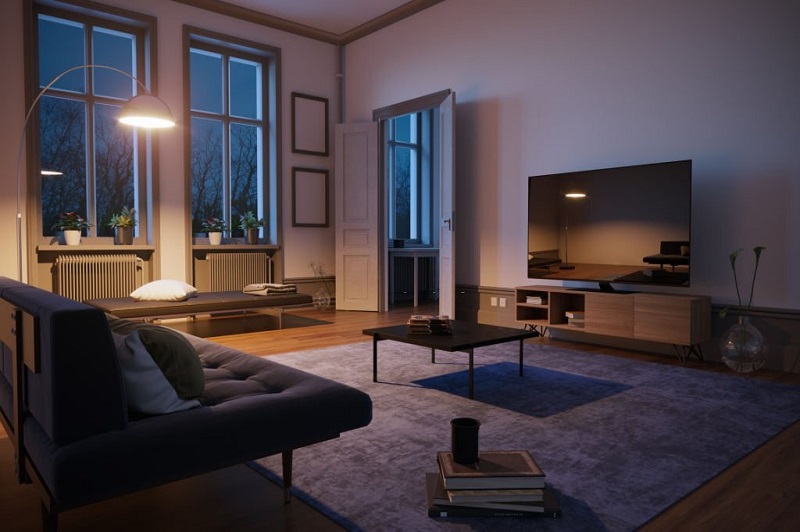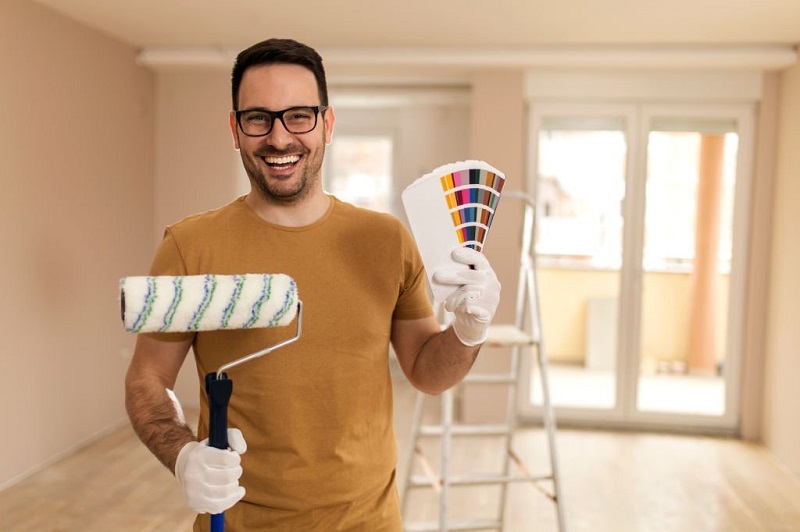Importance of Color in Home Interior Design
Color can have a powerful impact on our mood and behavior, which is why it’s important to carefully consider the hues you choose for your home’s interior design. Whether you’re looking to create a calming retreat or a lively gathering space, understanding the psychology of color can help you achieve the desired effect.
When choosing colors for different rooms in your home, it’s important to consider their intended purpose. Bedrooms, for example, are best suited for calming colors like blues, greens, and grays, while living rooms are better suited for warm and inviting colors like yellows, oranges, and reds. Kitchens, on the other hand, are best suited for bright and lively colors like reds, oranges, and yellows, while bathrooms benefit from serene and spa-like colors like blues, greens, and whites.

Once you’ve chosen a color palette for a room, consider different color schemes to create a cohesive look. Monochromatic schemes use shades and tints of the same color, while analogous schemes use colors that are adjacent on the color wheel for a harmonious look. Complementary schemes use colors that are opposite on the color wheel for a bold and dramatic look.
Accent colors can also add interest and depth to a room, whether through furniture, accessories, or artwork. When choosing an accent color, consider the color scheme you’ve chosen and select a hue that complements it. For example, a room with a monochromatic blue scheme might benefit from an accent color like yellow, while a room with a complementary blue and orange scheme might benefit from an accent color like green.
By incorporating these tips and tricks, you can effectively use color to enhance your home’s interior design. Whether you’re aiming for a calming retreat or a lively gathering space, the power of color can help you achieve your desired effect.
The Psychology of Color
Colors can have a profound impact on our mood and behavior, which is why it’s important to carefully consider the hues you choose for your home’s interior design. Warm colors like red, orange, and yellow can stimulate the senses and create a sense of energy and excitement, while cool colors like blue, green, and purple can create a calming and soothing effect.
When choosing colors for different rooms in your home, it’s important to consider their intended purpose. For example, if you want to create a relaxing space in your bedroom, consider using cool and calming colors like blues and greens. If you want to create a lively and inviting space in your living room, warm and vibrant colors like reds and oranges might be a better choice.
Color Schemes
Once you’ve chosen a color palette for a room, consider different color schemes to create a cohesive look. Monochromatic color schemes use shades and tints of the same color, creating a cohesive and harmonious look. Analogous color schemes use colors that are adjacent on the color wheel, creating a soft and pleasing effect. Complementary color schemes use colors that are opposite on the color wheel, creating a bold and striking look.
Accent Colors
Accent colors can also add interest and depth to a room, whether through furniture, accessories, or artwork. When choosing an accent color, consider the color scheme you’ve chosen and select a hue that complements it. For example, a room with a monochromatic blue scheme might benefit from an accent color like yellow, while a room with a complementary blue and orange scheme might benefit from an accent color like green.
Tips and Tricks
There are many ways to incorporate color into your home’s interior design, whether through paint, furniture, accessories, or artwork. Here are a few tips and tricks to get you started:
- Use a color wheel to help you choose complementary colors
- Use different shades and tints of the same color for a cohesive look
- Experiment with patterns and textures to add interest and depth to a room
- Use accent colors sparingly to avoid overwhelming a space
- Don’t be afraid to mix and match different color schemes and styles for a unique and personalized look.
Conclusion
Color is a powerful tool in home interior, and can help you create a space that truly reflects your personality and style. By understanding the psychology of color, choosing complementary color schemes, and incorporating accent colors and different textures, you can create a space that is both beautiful and functional. So go ahead and experiment with color – the possibilities are endless!
